How Chess Got into Europe
Based on the reliable historical information we know for certain that already in the early days of Islam Arabs practised Chess in Baghdad, spreading the game throughout all the geographical areas in which their political and cultural expansion was taking place. A characteristic of Arab literature of the time is that the stories about the origin of the game cannot be clearly distinguished from the legends. What seems to be clear, is that Chess quite probably entered southern Europe under the leadership of the Arabs.
The Arabs, themselves had learned to play the game during the conquest of Persia, already during the times of the Caliph Omar, between the years 638 and 651 of the Christian era. From the moment when Islam assumed the game as its own, Chess started to spread in all directions: in the Western World, within the vector of dissemination that interests us, one of the focal points of dissemination of Chess arrives at the Caucasus by way of the commercial routes. Another focal point connects with Byzantium. And the third will reaches the extreme ends of the Western Mediterranean, including the Iberian Peninsula. Proof of the process is not particularly steadfast in that pertaining to its first stage of transmission, being mainly based on the complete global historical context, in strewn archaeological findings, in philology and in the testimonies of the Arab historians of somewhat subsequent periods. Due to the circles in which it develops and the characteristics concerning the knowledge associated to the same, Chess appears in the Muslim culture during its first periods under a somewhat disturbing aura, and the reticence that the orthodox and traditionalists had towards
Chess appears to be partly based on this association (1). Arab literature about Chess started to see the light about two centuries after the birth of Islam, and the initial moment of the game’s embryonic gestation takes place quite a time afterwards. Even so, its definitive historical beginning and the exact moment of its birth as a social and cultural phenomenon can be established as of the end of the 8th century, when Chess starts to shine in its own light within the Islam domains of the East, being documented for the first time in its original format along with a series of texts, technical expressions, collections of problems and names of champions. The high percentage of Chess players of Persian origin is to be highlighted in view of the personal references made in the first Baghdad based texts. As of that moment and for many centuries to come Chess becomes one of the emanations that enjoy an aura of wisdom in the Muslim culture, and indeed without the Islamic motor as a driving force, neither Persian Chess nor the knowledge related to the same would have been so profusely disseminated to other geographical-cultural scopes. The first Arab reference in the East, without being absolutely certain, dates from the year 720. The second most probable reference dates from the year 750, while the third, this time completely solid, is found in the year 791, already fully immersed in the Abbasid period. (2) It is during the bloody war (between the Omeyans and Abbasids) that Chess somehow appears as a throwing weapon.
Testimonies about primitive Islamic Chess were drawn-up during the Abbasid period. The Abbasids won the civil war against the Omeyans, which led to the heyday of Sanskrit and Persian translations and likewise to the initial birth of Chess literature within a tacit permissiveness, although reticence of diverse Caliphs towards Chess is more than perceptible. The period of the Caliph Al Mammon, son of Harum ar Raschid (813-833) is the one that corresponds to the great Chess players and first writers of the Court, being likewise the period when Chess reaches Spain under the leadership of the Persian singer Ziriab, arriving from Baghdad, It is the rebirth of images, which were described by the Hebrew chronicler Hunayn ibn Ishaq. Baghdad continued to gradually fall into decadence as a cultural focal point of Islam until the Ottoman Conquest, with its rector role being distributed throughout various geographical points. Among these the most important is Al Andalus, the Arab name given to the Iberian Peninsula region that was subjected to Muslim domain. It was the Malik School that reigned in Al Andalus, corresponding to the most rigid attitude towards Chess, act according to what was sustained by Malik himself, the game was considered to be even more reprehensible than games of chance, “because it exercises even more fascination over the believer”. Dissemination It is from Baghdad that Chess is disseminated in all directions: towards the East, where primitive forms of Chaturanga represented its breeding ground, finally grafting into many of the national modalities of Chess of each one of the Asian countries (4). The Arabs call a complete family of games Shatransh, each with game boards in different shapes and sizes, with the basic shape that dominated all others is a result of evolutionary “Darwinist Laws”, which establish a predominance of the most suitable form in order to adapt to a certain scope.
Islamic Chess is the only one of all Chess games and archetype Chess games that thanks to “mutations” is universalised within the course of a secular process, the earliest stage of which is condensed in the Mediterranean cultural centres. As outlined by Murray, none of the Asian modalities of Chess was universalised because the culture that produced them was likewise not universal. The lack of specific literature in these countries has forced each generation to rewrite the technical laws of the game and, consequently, evolution and progress based on the accumulation of experience were halted.
Apart from China and Japan, on the Asian side Persian Chess was also transmitted to the Caucasus, penetrating in the territories we now call Russian by following the route of the commercial caravans, quite probably in very early periods (Linder en Chess in Old Russia). Some philological and archaeological traces remain of this. Regarding g to Nordic Europe, the Norman invasions in the Mediterranean appear to have played their own particular role. An abnormally high number of Medieval Chess pieces from Nordic Europe exists, which have been conserved right up until our days, and the presence of “Alquerque of Three” boards in Norman lands suggests that some board games were part of a direct cultural exchange with the Viking seafarers of the Mediterranean. Prof. Daniel Finke revised later-dated and more confusing testimonies. From these documents it can be gathered that Chess was introduced in places such as Iceland in the 12th century.
The most fruitful vector of dissemination for the game’s evolution is the one directed towards the Western World, because it coincides with the important current of historical progression. Byzantine empire during the Comena’s dynasty From Persia to Baghdad, and from there to the extreme ends of the Mediterranean, Chess spreads throughout Europe and after the transformation of some of its regulations, a circumstance that takes place in Spain in the 15th century, it continues to spread throughout the world. It is to this line of propagation that dissemination of the game is due in Western Europe, along with diverse knowledge included in the same carrier, and the of the same, more or less profound, are perceived since the initial implantation of Chess.
Byzantium is quite possibly included amongst these references, as is the case with the south of Italy; however, it is in Andalusia where implantation is particularly strong. It is at some intermediate point of the extensive Christian Empire in Byzantium that Chess is established in documentary fashion as Zatrikion. Philological evidence has established, that this is actually the Greek rendering of the Persian word Chatrang and not of the Arab word Shatransh. That is to say, Byzantium assimilated the term that defines Chess in accordance to Persian influence and not Arab, therefore, in a very early period, quite certainly before the 9th century, and perhaps even before the Sassanid Empire was conquered by the Arabs, as has been suggested by some authors such as Murray. The first text in which reference is made to the technical nature of the game suggesting its practice in Byzantium arises from an Arab source and would be exactly a letter from the Emperor Nicephorus to the Caliph Harum ar Raschid. The daughter of Emperor Alexis I (1081-1118), Ana Commena, in her laudatory epic “The Alexiad” mentions that Zatrikion was habitually played in her father’s court and that the origin of the game was “thanks to the Assyrians, who brought it to our land”.
Towards the middle of the 9th century, the Chronicler Al Masudi makes an interesting description of common Chess games, in which a compelling comment is found (6), which describes six varieties of Chess in accordance to their format and number of cells. Variety num. 4 is of particular interest, in which “Round Chess attributed to the Byzantines is mentioned, and their concern, along with that of the Persians and the inhabitants of India, due to the “underlying reasons of Chess”. The round chess board outlined as num. 5 of those described by Masudi as “zodiacal” serves for a Chess modality derived from India, which was used for astrological divination in one of its evolutions. Curiously enough a similar variant is likewise described by King Alfonso X on sheet 96 b of his “Book of Games”, dated 1283, in the chapter corresponding to ”The Game of Squares” with a complete description covering ludic astrology, accompanied by a game of “astrological tables” found on sheet 97 b (U. Schädler, Sphären-„Schach“. Studien zum sog. „Astronomischen Schachspiel“ bei al-Masudi, al-Amoli und Alfonso X, in: Zeitschrift für Geschichte der arabisch-islamischen Wissenschaften 13, 1999/2000, 205- 242)
Therefore, different variations of chess-type games existed in different countries, some of which have nothing to do with a game of war. The conclusion that Chess was deeply rooted in Byzantium towards the 12th century is reinforced by recent discoveries about the origins of the so-called “Charlemagne Chess Pieces”, matter that will be dealt with further along. Zatrikion The Byzantine chess The importance of Byzantium as a point of irradiation of Islamic Chess towards Europe must not be exaggerated, as neither the number of documents nor their quality can make it hold a starring role, which on the other hand would be contradicted by the entire general historical context. Byzantium was a relatively isolated redoubt of the important currents of cultural exchange, which fundamentally cross through Al Andalus. When it comes to Italy, the situation is even weaker than that of Byzantium, as Chess was introduced here at a much later date and it is documented for the first time only in 1061AD. On the other hand, “Arab domination of Sicily was not by a long shot as long as Spain’s, never reaching the same splendour and grandeur. The assumption of a “Roman introduction” of Chess arose in the 20th century, based on archaeological findings of Chess pieces at Venafro and in the catacombs of Saint Sebastian in Rome. En 1941 the German archaeologist Heinrich Fuhrmann published the finding of three lost pieces in his “Archäologischer Anzeiger”; a) 19 made of bone with ivory topping from Venafro. b) 8 made of bone and ivory found in the catacombs of Saint Sebastian in Rome. C) 9 rock crystal pieces taken to the Islamic Museum in Cairo from an unknown Egyptian location. He proposed a dating to the 2nd century of our era, assuming the pieces to be part of some sort of ludus latrunculorum
(8). During the 1950s, after the Second World War, Prof. Adriano Chicco once again undertook the matter of the possible existence of Chess in Rome, a question that was put forward as a dilemma: either the dating was incorrect, or the pieces perhaps belonged to a different sort of Chess game. A. Sanvito then undertook a study of the group of pieces found in Venafro and the Catacombs of Saint Sebastian, concluding that 1) The pieces were indeed Chess pieces, and 2) there were serious doubts about their dating, o the Roman or later Roman period. In his revision Sanvito dated the 9 rock crystal pieces in the Cairo Museum to the Egyptian Fatimid period. The south of Italy does not become important as a centre of Christian-Arab cultural exchange until the 13th century, during the Sicilian reign of Frederick II. By this date, however, the weight of the entire process had already been relieved onto the Iberian Peninsula.



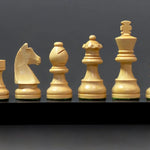
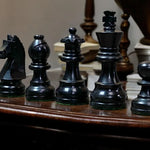
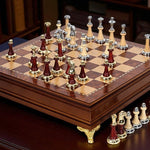
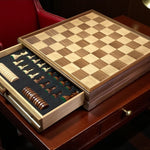
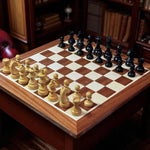
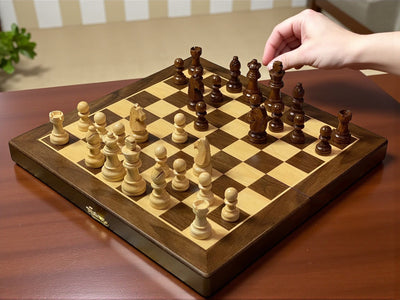
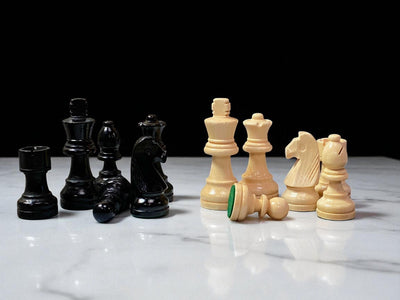
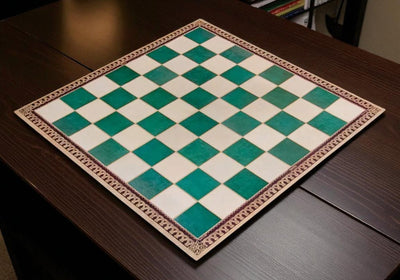
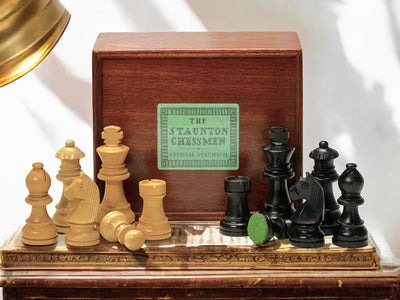
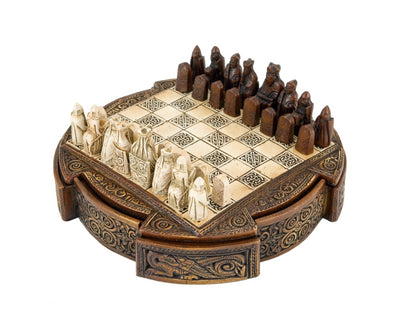

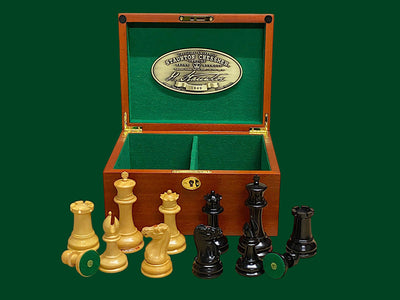
Leave a comment